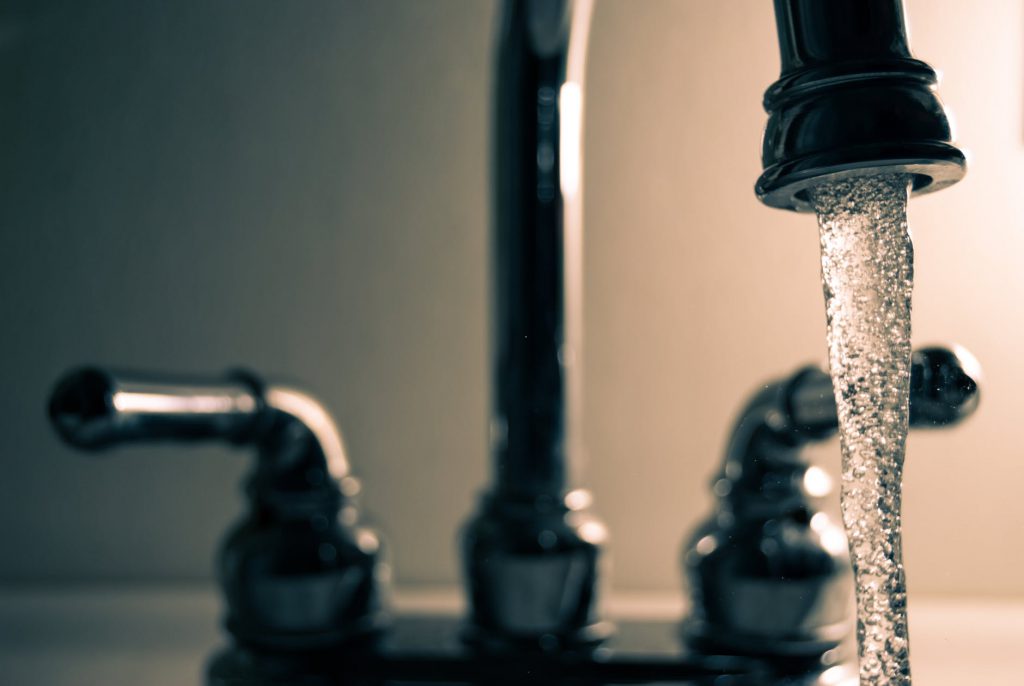State Surplus Could Fund Water Upgrades
Today is 'Imagine A Day Without Water' day. Without the right investment that day could arrive.
When we hear the words, “a day without water,” what likely comes to mind is water scarcity. What would you do if you had no water to drink, cook, or bathe? For tens of millions of people living in the American Southwest, a lack of water is quickly becoming more likely.
Here in the Midwest, we aren’t facing the threat of water scarcity, but other water crises are looming: Lead pipes, PFAS, and a lack of resilient systems in the face of climate change, to name a few. Delaying investment in our water systems can lead to catastrophic consequences – just look at Flint, MI, or Jackson, MS.
In recognition of the need to improve our drinking water infrastructure, Republicans and Democrats in Washington came together to pass the $1.2 trillion Infrastructure, Investment, and Jobs Act in 2021. The law includes more than $35 billion for drinking water infrastructure, including $15 billion just to replace lead service lines.
$15 billion sounds like a lot, but how much will each state get? Wisconsin is expected to receive $255 million over five years. The state has at least 170,000 lead service lines, and may have as many as 220,000. With full replacements costing about $10,000 each, that’s about $1.7 billion to $2.2 billion to replace all of them.
Make no mistake, the Bipartisan Infrastructure Law is a huge step forward in rebuilding our nation’s crumbling infrastructure. And no one doubts that more is needed. But until any additional federal funding arrives – if it ever does – Wisconsin will be short about $1.4 – $ 1.9 billion just to replace all the lead service lines in the state.
Lead service lines aren’t Wisconsin’s only water infrastructure challenge. PFAS have poisoned the wells in several Wisconsin cities. Governor Evers should be commended for his statewide initiative to collect unused firefighting foam that contains these toxins.
There is no doubt that communities across Wisconsin face serious challenges of fixing old and failing infrastructure, addressing emerging threats to public health, and preparing for erratic and severe weather events of the future. We could wring our hands and worry about what we’ll do to meet these challenges, or we could take action now.
State leadership in Madison should work together to invest some of the state’s $5 billion surplus in Wisconsin’s drinking water, wastewater, and storm water infrastructure. There is an easy mechanism to do this: the Wisconsin Department of Natural Resources already manages two “revolving loan” programs, the Safe Drinking Water Loan Program and the Clean Water Loan Program. These are the same programs that disburse the newly allocated federal infrastructure funds to cities, towns, and villages across Wisconsin.
Every state is required by federal law to put a minimum amount of funding into their revolving loan funds – a percentage “match” of federal dollars. There is no prohibition on putting more than the minimum into either program. The Legislature could easily allocate a portion of the state’s surplus to these programs, and allow local communities to solve their own water infrastructure challenges with their own tax dollars.
Brian Rothgery is the marketing and communications officer for Milwaukee Water Works.
If you think stories like this are important, become a member of Urban Milwaukee and help support real, independent journalism. Plus you get some cool added benefits.
Op-Ed
-
Wisconsin Candidates Decry Money in Politics, Plan to Raise Tons of It
 Dec 15th, 2025 by Ruth Conniff
Dec 15th, 2025 by Ruth Conniff
-
Trump Left Contraceptives to Rot; Women Pay the Price
 Dec 8th, 2025 by Dr. Shefaali Sharma
Dec 8th, 2025 by Dr. Shefaali Sharma
-
Why the Common Council’s Amended Budget is Good Policy for Milwaukee
 Nov 20th, 2025 by Alds. Marina Dimitrijevic and Russell W. Stamper, II
Nov 20th, 2025 by Alds. Marina Dimitrijevic and Russell W. Stamper, II
















